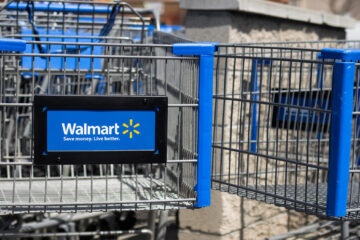Target’s resurrection under Chairman and CEO Brian Cornell has reached an inflection point as the retail giant reported sales in excess of $100 billion.
Retail giant Target’s (TGT) – Get Target Corporation Report fortunes were dwindling around this time, eight years ago, the Minneapolis retailer was suffering from the financial fallout of one of the largest credit card thefts in history.
During fourth quarter 2013, Target experienced a data breach in which an intruder gained unauthorized access to its network and stole certain payment card and other guest information.
Close to 40 million credit and debit card accounts, as well as the personal data for up to 70 million people had been compromised. Soon after Chief Executive Gregg Steinhafel was asked to step down by the company’s board in May 2014.
Eventually, Target said the data breach cost the company $162 million in expenses across 2013 and 2014.
Target was also reeling from escalating losses from its Canada expansion where Target opened 127 stores in just one year.
The market was abuzz with dismal reviews and analysts tracking the company saying there were no exciting reasons left to shop at Target. The order of events played out like a giant house of cards.
Image source: John Smith/VIEWpress.
Target’s Second Act With Brian Cornell
The big box retailer tapped former PepsiCo (PEP) – Get PepsiCo, Inc. Report and Walmart’s Sam’s Club veteran Brian Cornell to helm its operations and clean up the mess.
On July 31, 2014, Target appointed Cornell as its next chairman and chief executive.
Six months later, Target exited its loss making Canada operations to mark the first big win under Cornell’s leadership.
“This difficult decision in Canada allows us to focus all of our energy on strengthening and executing our plans in the U.S.,” Cornell had said at the time.
Fast forward to 2017, when Cornell defined his comeback plan for Target’s struggling U.S. business. Cornell’s plan involved massive investment towards redesigning of stores, adding smaller-format stores, launching owned-and-operated brands and cutting prices.
“When I came in, we were recovering from the data breach. We had a challenging entry into Canada. I thought those were the two biggest challenges I was going to face. I quickly discovered the real challenge was in the U.S., where we were losing market share, and [store] traffic was declining, ” Cornell told The Wall Street Journal in an interview.
Target now has 48 private brands in its catalog including Room Essentials, Smartly, Simply Balanced, Market Pantry, and Archer Farms among others. Reportedly 10 of which are worth a billion dollars, according to Retail Dive.
Target Surpasses $100 Billion in Revenue
Target reported $106 billion in total annual revenue from $77.1 billion at the end of fiscal year 2020, March 1. The retail major grew nearly $28 million, or more than 35% over the past two years.
Even in this very competitive retail marketplace, and with two years of living in a pandemic, Cornell’s efforts have paid off and how.
“Our strong fourth-quarter performance capped off a year of record growth in 2021, reinforcing the durability of our business model and our confidence in long-term profitable growth,” said Cornell in a statement.
For FY2022, rivals Walmart (WMT) – Get Walmart Inc. Report and Amazon (AMZN) – Get Amazon.com, Inc. Report reported annual revenue of $572.8 billion and $469.8 billion respectively.
“As we look ahead, we’ll keep investing and delivering on all that has earned the loyalty and trust of our guests; that starts with our outstanding team and includes continued differentiation through affordability, assortment, ease and convenience,” Cornell added.
For fiscal year 2022, the company expects 1% to 5% revenue growth, an operating margin rate of 8% or higher, low-single digit growth in operating margin dollars, and high-single digit growth in adjusted earnings per share.


